20 X NEON BLUE TETRA LIVE TROPICAL FISH AQUARIUM TANK 1 TO 1.5 CM, Beautiful Schooling Fish That Thrive Together, Ideal for Creating a Vibrant Aquatic Environment in Your Tank, Enhance Your Tank with Colorful Aquatic Friends
£22.49 Original price was: £22.49.£18.99Current price is: £18.99.
Welcome these 20 beautiful Neon Blue Tetra into your aquarium! These stunning tropical fish are vibrant additions, perfect for community tanks. Their graceful movements and gentle nature make them ideal companions. Create a flourishing aquatic environment with these exquisite schooling fish.
Species Introduction
The Neon Blue Tetra, scientifically known as Paracheirodon innesi, is a small yet vibrant freshwater fish that hails from the lush waters of South America, specifically the Amazon River basin. These beautiful schooling fish are a popular choice among aquarists due to their stunning iridescent blue and red coloration, which adds a splash of color and life to any aquarium setup. With a maximum length of around 4 cm, they are perfect for community tanks and can thrive in a variety of aquatic environments. In their natural habitat, Neon Blue Tetras are found in slow-moving waters, often amidst dense vegetation, which provides them with both shelter and foraging opportunities. These fish are known for their peaceful temperament, making them ideal companions for other community fish. When you welcome these beautiful creatures into your tank, you are not just adding fish; you are enhancing the overall aesthetic and ecological balance of your aquatic environment.
Care Requirements Dashboard
Essential Care Guide for Your Neon Blue Tetra
| Optimal Living Conditions | |
|---|---|
| Water Temperature | 24-27°C (75-81°F) |
| pH Level | 6.5-7.5 |
| Water Hardness | 4-12 dKH |
| Minimum Tank Size | 80L (20 gal) |
| Salinity | Freshwater |
| Care Level | Beginner Friendly |
To ensure the health and happiness of your Neon Blue Tetras, it is essential to provide them with an adequately sized aquarium. A minimum tank size of 20 gallons is recommended to accommodate a school of these fish, as they thrive in groups of six or more. The water parameters should be closely monitored, with a temperature range of 22-26°C (72-79°F) being ideal. The pH level should be maintained between 6.0 and 7.0, while the hardness should range from 2 to 10 dGH. Regular water changes and the use of a quality filtration system will help maintain optimal water quality, which is crucial for the well-being of these delicate aquatic companions.
Natural Behavior & Temperament
Neon Blue Tetras are known for their lively and social nature, often seen swimming in schools throughout the aquarium. In their natural habitat, these fish exhibit a strong schooling behavior, which not only provides them safety in numbers from predators but also enhances their overall well-being. Their peaceful temperament allows them to coexist harmoniously with a variety of other community fish, making them an excellent choice for beginner aquarists. Observing their natural swimming patterns can be a delightful experience; they dart around the tank, showcasing their vibrant colors and engaging in playful interactions with their tank mates. This active behavior is not only entertaining but also essential for their mental stimulation and health. When kept in appropriate group sizes, Neon Blue Tetras display reduced stress levels and exhibit more natural behaviors, contributing to a thriving aquarium ecosystem.
Tank Setup Guide
Creating an ideal environment for your Neon Blue Tetras involves replicating their natural habitat as closely as possible. Start by selecting a spacious aquarium with plenty of swimming space and hiding spots. A substrate of fine gravel or sand is recommended, as it mimics the riverbeds they are accustomed to. Incorporate live plants such as Java Fern, Anubias, or Amazon Sword to provide shade and shelter, enhancing the aesthetic appeal of your tank while also serving as a natural source of food. Driftwood and rocks can also be included to create hiding spots and territories. Ensure that the tank is well-planted, as this will help to diffuse light and create a more natural environment. Additionally, maintaining a gentle water flow will mimic the slow-moving waters of their native habitat, allowing your Neon Blue Tetras to thrive. Proper lighting is essential, as it helps promote plant growth while also bringing out the vibrant colors of your fish.
Water Quality Management
✓ Good Water Quality is Crucial
pH Level: 6.0-7.0
Temperature: 22-26°C (72-79°F)
Hardness: 2-10 dGH
Maintaining optimal water quality is vital for the health of your Neon Blue Tetras. Regular testing of the water parameters is essential to ensure that the pH level remains between 6.0 and 7.0, which is ideal for these fish. The temperature should be consistently maintained within the range of 22-26°C (72-79°F) to prevent stress and health issues. Additionally, the hardness of the water should be kept between 2 to 10 dGH. To achieve this, regular water changes of 10-20% weekly are recommended, along with the use of a high-quality filtration system to keep the water clean and clear. Monitoring ammonia, nitrite, and nitrate levels is also crucial, as elevated levels can lead to serious health problems for your fish. By ensuring that the water parameters are consistently monitored and maintained, you will create a thriving environment for your Neon Blue Tetras.
Feeding & Nutrition
Feeding your Neon Blue Tetras a balanced diet is essential for their health and vibrancy. In their natural habitat, they primarily feed on small insects, crustaceans, and plant matter. In captivity, a high-quality flake or micro-pellet food designed for tropical fish is ideal. It is recommended to provide a varied diet that includes live or frozen foods such as brine shrimp, daphnia, and bloodworms to enhance their color and promote overall health. A feeding schedule of 2-3 small meals per day is optimal, ensuring that all fish receive adequate nutrition without overfeeding, which can lead to water quality issues. It is important to observe your fish during feeding to ensure that all members of the school are eating and that no food is left uneaten. This will help maintain water quality and prevent any potential health issues. Always remove any uneaten food after a few minutes to avoid pollution in the tank.
Compatibility Guide
✓ Peaceful Community Fish
Ideal Tank Mates: Guppies, Corydoras, Rasboras, and other small peaceful fish
Avoid: Larger predatory fish
Neon Blue Tetras are known for their peaceful nature, making them excellent additions to community tanks. They thrive when kept in groups of six or more, allowing them to exhibit their natural schooling behavior. Ideal tank mates include small, peaceful fish such as Guppies, Corydoras, Rasboras, and other small tetras. It is crucial to avoid larger predatory fish that may view Neon Blue Tetras as a meal, as this can lead to stress and aggression. When selecting tank mates, consider the size and temperament of the fish to ensure a harmonious environment. By carefully choosing compatible species, you can create a vibrant and dynamic community tank that showcases the beauty of your Neon Blue Tetras while ensuring the well-being of all aquatic inhabitants.
Health & Wellness
Ensuring the health and wellness of your Neon Blue Tetras involves regular monitoring and preventive care. Common health issues include ich, fin rot, and other parasitic infections, which can arise from poor water quality or stress. Signs of illness may include lethargy, loss of appetite, or abnormal swimming patterns. To prevent these issues, it is essential to maintain high water quality through regular water changes and proper filtration. Quarantining new fish before introducing them to the main tank can also help prevent the spread of diseases. If any signs of illness are observed, prompt action should be taken, which may include adjusting water parameters, treating with appropriate medications, or consulting with an aquatic veterinarian. Regular observation and proactive care will ensure that your Neon Blue Tetras remain healthy and vibrant, contributing to a thriving aquarium ecosystem.
Breeding Information
Breeding Neon Blue Tetras can be a rewarding experience for aquarists, although it requires specific conditions to be successful. To initiate breeding, a separate breeding tank is recommended, ideally with soft, slightly acidic water to mimic their natural spawning conditions. The breeding tank should be densely planted to provide cover for the eggs and fry. When ready to breed, males will display brighter colors and engage in courtship behaviors, which include chasing and dancing around the female. After spawning, the adult fish should be removed from the tank, as they may eat the eggs. The eggs typically hatch within 24-36 hours, and the fry will become free-swimming after about a week. During this time, it is crucial to provide infusoria or finely crushed flakes as food for the fry, ensuring their healthy growth. With proper care and attention, breeding Neon Blue Tetras can lead to a new generation of vibrant aquatic companions.
Acclimation Process
Introducing your Neon Blue Tetras to their new home requires a careful acclimation process to minimize stress and ensure their health. Begin by floating the sealed bag containing the fish in the aquarium for about 15-20 minutes, allowing the temperature to equalize. After this, gradually mix small amounts of the aquarium water into the bag every 5 minutes for about 30 minutes. This process helps the fish adjust to the water parameters of their new environment. Once acclimated, gently release the fish into the tank using a net to avoid adding any transport water that may contain harmful substances. Avoid dumping the fish directly into the tank, as this can shock them and lead to health issues. By following this acclimation procedure, you will help your Neon Blue Tetras transition smoothly into their new aquatic home.
Long-term Care
Caring for your Neon Blue Tetras over the long term involves regular maintenance and monitoring of their environment. These fish typically have a lifespan of 5-8 years when kept in optimal conditions. As they grow, it is essential to monitor their health and adjust their diet accordingly to ensure they receive the necessary nutrients for growth and vitality. Regular water changes, consistent monitoring of water parameters, and maintaining a stable environment will contribute to their overall well-being. Additionally, keeping a close eye on their behavior can help detect any signs of stress or illness early on, allowing for prompt intervention. By providing a stable and nurturing environment, you can enjoy the beauty and companionship of your Neon Blue Tetras for many years to come.
Natural Habitat Recreation
Recreating the natural habitat of Neon Blue Tetras in your aquarium involves careful consideration of both the physical environment and the water parameters. In the wild, these fish inhabit slow-moving streams and rivers with abundant vegetation and cover. To mimic this environment, use a combination of live plants, driftwood, and rocks to create a lush and inviting space. Incorporate plants such as Java Moss, Hornwort, and Amazon Sword to provide shelter and foraging opportunities. The use of dark substrates can help enhance their coloration and create a more natural look. Additionally, ensuring that the water flow is gentle will replicate their natural habitat, allowing your Neon Blue Tetras to thrive. By creating a biotope that reflects their natural environment, you will not only enhance the beauty of your aquarium but also promote the health and well-being of your fish.
Seasonal Care Adjustments
As the seasons change, it is important to adjust your care routine for Neon Blue Tetras to ensure their continued health and happiness. During warmer months, water temperatures can rise, so it may be necessary to use a heater with a thermostat to maintain a stable environment. Conversely, in cooler months, ensure that the water temperature remains within the ideal range of 22-26°C (72-79°F). Additionally, seasonal changes may affect the growth of aquatic plants, requiring adjustments in lighting and nutrient dosing. Regularly monitor water parameters and make necessary adjustments to maintain optimal conditions. By being proactive and attentive to seasonal changes, you can ensure that your Neon Blue Tetras remain healthy and vibrant throughout the year.
Expert Tips
For those looking to provide the best care for their Neon Blue Tetras, consider the following expert tips. First, always maintain a stable environment by regularly checking water parameters and performing routine maintenance. Second, provide a varied diet that includes high-quality flake food, live or frozen foods, and occasional plant matter to ensure balanced nutrition. Third, ensure that your tank is adequately planted to provide hiding spots and reduce stress. Lastly, consider keeping a larger school of Neon Blue Tetras, as they thrive in groups and display more natural behavior when in larger numbers. By following these expert tips, you will create a thriving environment for your Neon Blue Tetras, allowing you to enjoy their beauty and companionship for years to come.
Troubleshooting
Despite your best efforts, you may encounter challenges while caring for your Neon Blue Tetras. Common issues include stress, disease, and aggression from tank mates. If you notice signs of stress, such as hiding or erratic swimming, check water parameters immediately and make necessary adjustments. For disease prevention, maintain high water quality and quarantine new fish before introducing them to the main tank. If aggression arises, consider rearranging the tank layout or adding more hiding spots to reduce territorial disputes. By being observant and proactive, you can address potential issues before they escalate, ensuring a healthy and harmonious environment for your Neon Blue Tetras.
Scientific Background
The Neon Blue Tetra belongs to the family Characidae and is classified under the scientific name Paracheirodon innesi. This species is part of a group of small, colorful fish that are native to the freshwater rivers and streams of South America. The Neon Blue Tetra is particularly noted for its striking coloration, which serves as both a means of communication and a form of camouflage in their natural habitat. Conservation efforts are important for this species, as habitat destruction and pollution pose threats to their populations in the wild. By keeping Neon Blue Tetras in a well-maintained aquarium, aquarists can contribute to the appreciation and conservation of this beautiful species, fostering awareness of their natural habitat and the importance of preserving aquatic ecosystems.
Advanced Care Techniques
For experienced aquarists looking to take their care of Neon Blue Tetras to the next level, consider implementing advanced techniques such as breeding programs or specialized feeding regimens. Creating a dedicated breeding setup with optimal water conditions and ample hiding spots can lead to successful spawning and raising of fry. Additionally, experimenting with different types of food, including high-quality pellets, live foods, and spirulina-based products, can enhance coloration and overall health. Regularly rotating food types can also prevent dietary deficiencies and encourage natural foraging behaviors. By applying these advanced care techniques, you can ensure that your Neon Blue Tetras thrive and contribute to a vibrant and dynamic aquarium ecosystem.
Water Quality Parameters
Optimal Range
24-27°C
6.5-7.5
0 ppm
Caution Zone
22-24°C or 27-29°C
6.0-6.5 or 7.5-8.0
0.25-0.5 ppm
Danger Zone
<22°C or >29°C
<6.0 or >8.0
>0.5 ppm
Monitoring Tip: Test water parameters weekly and perform regular water changes to maintain optimal conditions for your aquatic friends!
Frequently Asked Questions
Q: What tank size is required for Neon Blue Tetras?
Neon Blue Tetras thrive in groups and require adequate space to swim freely. A minimum tank size of 60 litres is recommended for a school of 20 fish. This size ensures ample swimming space and helps maintain stable water conditions. It is essential to include plenty of plants and decorations, providing hiding spots and reducing stress. A well-planted tank mimics their natural habitat, promoting a healthy and vibrant environment. Always ensure the tank is properly cycled before introducing these lovely fish to avoid ammonia spikes.
✓ Expert Tip
Consider a larger tank if you wish to add more species, as overcrowding can lead to stress and health issues.
Q: What water parameters do Neon Blue Tetras require?
Neon Blue Tetras prefer slightly acidic to neutral water, with a pH range of 6.0 to 7.5. The water hardness should be between 2-10 dGH, ensuring a comfortable environment. Maintaining a stable temperature between 22°C to 26°C is crucial for their health. Regular water testing is essential; fluctuations can stress the fish and lead to illness. A good filtration system and regular water changes (approximately 25% weekly) will help maintain these parameters, ensuring a thriving aquarium.
✓ Expert Tip
Use a quality water conditioner to remove harmful chemicals from tap water before adding it to the tank.
Q: How often should I feed Neon Blue Tetras?
Neon Blue Tetras should be fed small amounts two to three times a day. It is crucial to provide a varied diet, including high-quality flake food, frozen or live foods such as brine shrimp or daphnia, and vegetable matter. Overfeeding can lead to poor water quality and health issues, so only offer what they can consume in a few minutes. Regular feeding schedules help maintain their energy levels and vibrant colours, ensuring they thrive in your aquarium.
✓ Expert Tip
Consider feeding a high-quality colour-enhancing flake to promote their brilliant hues.
Q: What are the best tank mates for Neon Blue Tetras?
Neon Blue Tetras are peaceful fish and do well in community tanks. Ideal tank mates include other small, non-aggressive fish like Corydoras, Guppies, and Rasboras. Avoid larger or territorial species that may see them as prey. Keeping them in a school of six or more will reduce stress and promote natural behaviour. Always monitor interactions when introducing new tank mates to ensure compatibility and a harmonious environment.
✓ Expert Tip
Adding live plants can help provide hiding spots and reduce stress among the fish.
Q: How do I properly acclimatise Neon Blue Tetras to my aquarium?
Acclimatising Neon Blue Tetras is crucial for their health. Begin by floating the sealed bag in the aquarium for about 15-20 minutes to equalise the temperature. Then, gradually mix small amounts of aquarium water into the bag every 5-10 minutes over the next hour. This process helps them adjust to the water parameters of their new home. Finally, gently place the fish into the aquarium using a net, avoiding adding bag water to your tank, which may contain harmful substances.
✓ Expert Tip
Performing this acclimatisation process slowly helps reduce stress and increases their chances of thriving.
Q: What are the signs of healthy Neon Blue Tetras?
Healthy Neon Blue Tetras exhibit vibrant colours, clear eyes, and active behaviour. They should swim freely and socialise with their companions. Watch for any signs of distress, such as lethargy, loss of appetite, or unusual swimming patterns. Fins should be intact without any signs of fraying or discoloration. Regularly checking their health and behaviour will help you identify any potential issues early, ensuring a happy aquarium environment.
✓ Expert Tip
Keeping a close eye on their behaviour can help you spot potential problems before they escalate.
Q: How do I successfully breed Neon Blue Tetras?
Breeding Neon Blue Tetras requires a separate breeding tank with soft, acidic water and plenty of spawning sites, such as fine-leaved plants. Set the temperature to around 24°C. Introduce a male to a female to encourage spawning, typically during early morning hours. After spawning, remove the adults to prevent them from eating the eggs. The eggs will hatch within 24-36 hours, and the fry can be fed infusoria or finely crushed flake food until they grow larger.
✓ Expert Tip
Maintaining pristine water conditions is essential for fry survival and growth.
Q: What temperature should I maintain for Neon Blue Tetras?
Neon Blue Tetras thrive in a temperature range of 22°C to 26°C. Maintaining a stable environment is crucial for their health and wellbeing. Sudden temperature fluctuations can lead to stress and illness. A reliable aquarium heater with a thermostat can help regulate the temperature effectively. Regularly monitor the water temperature using a quality thermometer to ensure it remains within this optimal range.
✓ Expert Tip
Using a heater with a built-in thermometer can simplify maintaining the ideal temperature.
Q: How long do Neon Blue Tetras typically live in captivity?
In a well-maintained aquarium, Neon Blue Tetras can live for approximately 5 to 8 years. Ensuring optimal water conditions, a balanced diet, and a stress-free environment significantly contributes to their longevity. Regular health checks and prompt action against any signs of illness will also aid in extending their lifespan. Providing them with a proper home will allow these beautiful fish to thrive for many years.
✓ Expert Tip
Keeping a detailed journal of their health and tank conditions can help identify patterns over time.
Q: What type of substrate is most suitable for Neon Blue Tetras?
Neon Blue Tetras prefer a soft substrate that mimics their natural habitat. Fine sand or smooth gravel is ideal, as it allows for comfortable swimming and foraging. Avoid sharp substrates that could injure their delicate fins. A darker substrate can enhance their vibrant colours, creating a visually appealing environment. Additionally, incorporating live plants can provide cover and improve the overall aesthetics of the tank.
✓ Expert Tip
Consider adding a layer of leaf litter to create a more natural environment while aiding in water quality.
Q: What behavioural patterns should I expect from Neon Blue Tetras?
Neon Blue Tetras are social and active fish, often seen schooling together in the mid to upper levels of the tank. They display curious behaviour, exploring their surroundings and interacting with tank mates. You may notice them darting about or nipping at plants, which is normal behaviour for these lively fish. They thrive in groups, so keeping at least six is essential for their wellbeing and to prevent stress.
✓ Expert Tip
Providing ample hiding spots can help reduce stress and allow them to exhibit their natural behaviour.
Q: How can I prevent common diseases in Neon Blue Tetras?
Preventing diseases in Neon Blue Tetras begins with maintaining optimal water quality, including regular testing and water changes. Avoid overfeeding, as uneaten food can degrade water quality. Quarantine new fish before introducing them to your established tank to prevent the spread of diseases. Observing your fish regularly will help you catch any signs of illness early, allowing for prompt treatment. Keeping the tank clean and avoiding overcrowding will also contribute to their overall health.
✓ Expert Tip
Consider adding aquarium salt in appropriate dosages to help prevent stress-related diseases.
Q: What lighting conditions do Neon Blue Tetras prefer?
Neon Blue Tetras thrive under moderate lighting conditions. Bright light can cause stress and encourage algae growth, so it is advisable to provide subdued lighting, which mimics their natural habitat. Using floating plants or tall vegetation can help diffuse light and create shaded areas. A light cycle of 10-12 hours daily is ideal, promoting a healthy environment while allowing the fish to exhibit their natural behaviours.
✓ Expert Tip
Consider using LED lights with adjustable intensity to create the perfect lighting conditions for your tank.
Q: How do I recognise stress in Neon Blue Tetras?
Stress in Neon Blue Tetras can be identified through several behavioural changes. Look for signs such as lethargy, hiding more than usual, and erratic swimming patterns. They may also display faded colours, clamped fins, or an increase in aggression towards tank mates. Maintaining stable water parameters and providing a comfortable environment is essential to reduce stress levels. If you notice these signs, it may be time to assess the tank conditions and make necessary adjustments.
✓ Expert Tip
Regular monitoring and providing a well-planted environment can significantly reduce stress in your fish friends.
Q: What natural habitat conditions should I replicate for Neon Blue Tetras?
Neon Blue Tetras originate from the clear waters of the Amazon Basin, where they inhabit slow-moving streams and rivers. To replicate their natural habitat, include soft, slightly acidic water with plenty of hiding spots, such as plants and driftwood. A well-planted tank mimics their environment, providing shelter and reducing stress. Additionally, using a dark substrate can enhance their colours and create a comfortable space for these beautiful fish to thrive.
✓ Expert Tip
Incorporating natural materials in your aquascaping can help create a more authentic environment.

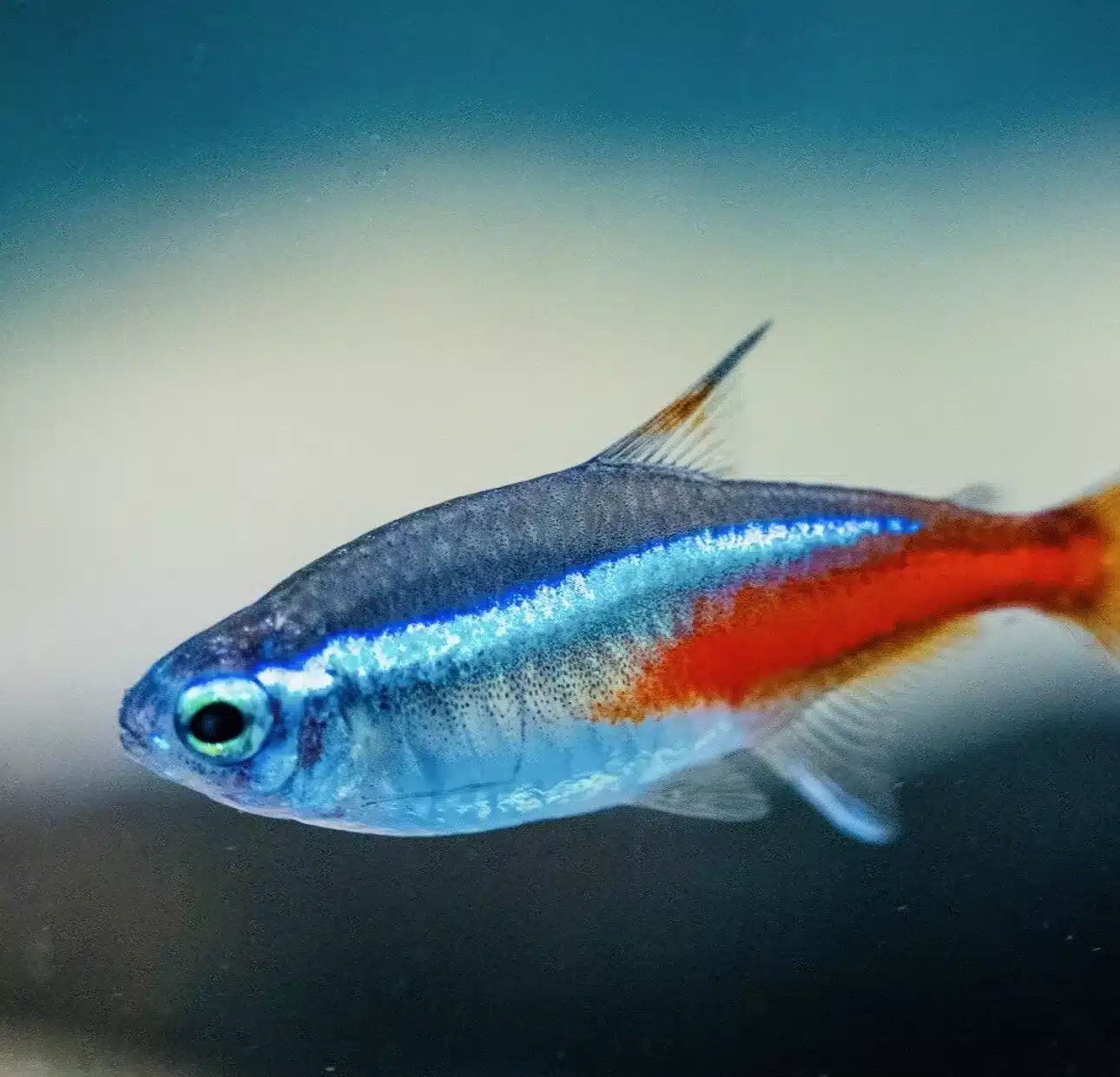
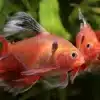
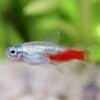


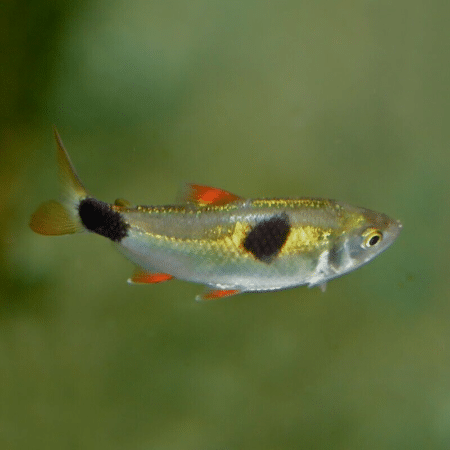
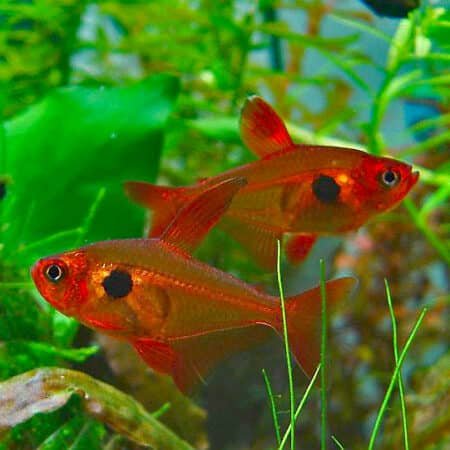









Emily Carter (verified owner) –
I recently added the 20 Neon Blue Tetras to my aquarium, and I couldn’t be happier! As a passionate fish parent, I prioritize the health and happiness of my fish above all. After two weeks of observing them, I can say these little beauties have truly transformed my tank. Their vibrant colors are absolutely mesmerizing, especially when they school together, creating a stunning display.
They arrived in excellent condition – lively and alert! The seller was quick to ship and included helpful care instructions, which I always appreciate. I’ve kept other freshwater fish before, but these Neon Blue Tetras stand out for their active and social behavior. Compared to other tetras I’ve had, these are definitely more engaging.
If you’re considering adding tropical fish to your setup, I highly recommend these Neon Blue Tetras. They thrive in groups and adapt well to a community tank, making them perfect for both beginners and seasoned aquarists alike. Just ensure your tank is well-maintained and properly cycled, and you’ll see these little guys flourish! One minor note: they do prefer a bit of cover in the tank, so adding some plants or decorations might enhance their environment. I’ll definitely be purchasing more soon!
Emily Carter (verified owner) –
I recently purchased 20 Neon Blue Tetras for my 55-gallon aquarium, and I couldn’t be happier with my decision! These little gems arrived healthy and vibrant, each measuring around 1 to 1.5 cm. It’s been about two weeks, and they are settling in beautifully, schooling together and bringing so much life to my tank. Their shimmering blue and hints of neon are simply breathtaking under the lighting.
As a caring fish parent, I appreciate how these tropical fish thrive in groups, and I’ve noticed they exhibit such playful behavior when they feel comfortable. Compared to other schooling fish I’ve tried, the Neon Blue Tetras are far more active and visually stunning. The only small concern I had was that one seemed slightly shy at first, but with a bit of time, they’ve all become quite confident.
I highly recommend these tetras to anyone looking to create a vibrant aquatic environment. They’re perfect for both beginners and seasoned aquarists like myself. Plus, it’s heartwarming to see them flourish in a well-maintained community tank. Just remember to keep their water conditions stable and provide plenty of hiding spots! I would definitely buy them again!